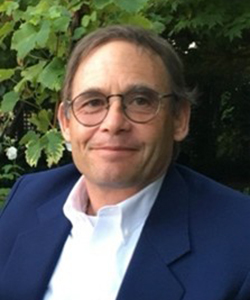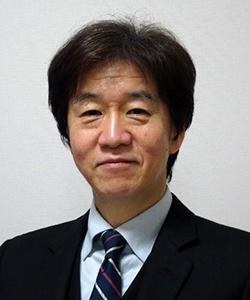
Terahertz Technology Prize
This prize is awarded to a person who contributed significantly to the promotion of terahertz science, terahertz technology, and their industrial applications.
Terahertz Technology Prize in FTT 2025 is awarded to Dr. Peter H. Siegel and Dr. Tadao Nagatsuma for their significant, unparalleled achievement in terahertz science and technology, especially the promotion of terahertz development.
The prize will be presented on Thursday, October 16th, 2025.Prize Winners
Dr. Peter H. Siegel

Peter H. Siegel received the B.A. degree in astronomy from Colgate University in 1976, the M.S. degree in physics from Columbia University in 1978, and the Ph.D. degree in electrical engineering (EE) from Columbia University in 1983. He has held appointments as a Research Fellow and Engineering Staff at the NASA Goddard Institute for Space Studies, New York City, NY, USA, from 1975 to 1983, a Staff Scientist at the National Radio Astronomy Observatory, Central Development Labs, Charlottesville, VA, USA, from 1984 to 1986, a Technical Group Supervisor and a Senior Research Scientist at the Jet Propulsion Laboratory (JPL), National Aeronautics and Space Administration (NASA), Pasadena, CA, USA, from 1987 to 2014, and a Faculty Associate in electrical engineering and a Senior Scientist in biology at the California Institute of Technology (Caltech), Pasadena, CA, USA, from 2002 to 2014. He is currently CEO of THz Global, a small consulting company, and a founding member of Cover AI, a start-up company working on the widespread commercialization and deployment of THz imaging systems for hidden weapons detection in US K-12 school systems. Dr. Siegel has been involved in THz technology and development for 50 years. He has served as an IEEE Distinguished Lecturer, and the Vice-Chair and Chair of the IEEE MTTS THz Technology Committee, and has been the founding Editor-in-Chief of two extremely successful technical journals: IEEE Transactions on Terahertz Science and Technology from 2010-2014 and most recently IEEE Journal of Microwaves which just received the highest impact factor ever for any journal in the MTT suite of more than 10 publications over 75 years. Dr. Siegel is also the founder, in 2008, and first elected chair of the International Society of Infrared, Millimeter, and Terahertz Waves and has served as the annually elected general secretary and treasurer since 2011.
Dr. Tadao Nagatsuma

Tadao Nagatsuma received his Ph.D. degree in electronic engineering from Kyushu University, Fukuoka, Japan, in 1986. His doctoral research focused on millimeter-wave and submillimeter-wave oscillators based on superconducting Josephson junctions, culminating in the development of “Flux-Flow Oscillators (FFOs).” Upon joining NTT Laboratories in 1986, he transitioned his research focus from superconducting devices to semiconductor technologies. Over the next decade, he led pioneering work in the design and characterization of semiconductor devices and integrated circuits. Notably, he developed and commercialized high-frequency measurement systems—such as testers, network analyzers and oscilloscopes—capable of handling signals up to 1 THz, leveraging advanced optical signal generation and detection techniques. These systems played a crucial role in evaluating cutting-edge semiconductor components at NTT, including the uni-traveling-carrier photodiode (UTC-PD), widely recognized as a foundational terahertz photodiode. In 1999, Dr. Nagatsuma was named an NTT Distinguished Technical Member and launched the Terahertz Applications Project. One of his landmark achievements was the realization and commercialization of the world’s first wireless communication system operating above 100 GHz, specifically in the 120 GHz band—marking a historic milestone in high-frequency wireless technology. Since his appointment as Professor at Osaka University in 2007, Dr. Nagatsuma has continued to push the boundaries of terahertz science, exploring ultra-high-frequency bands such as 300 GHz (200–400 GHz) and 600 GHz (500–800 GHz). His research spans communications, sensing, radar, and imaging applications, all underpinned by photonics-based signal generation and detection. Following his retirement from Osaka University in 2024, he joined the University of Tokyo, where he remains dedicated to mentoring the next generation of researchers and advancing the frontiers of terahertz innovation.